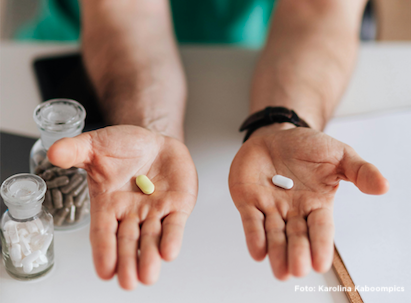Sexually Transmitted Infections in the PrEP Era
Abstract
HIV pre-exposure prophylaxis (PrEP) is an effective and safe biomedical intervention for people at high risk of acquiring the infection and is one of the combination prevention strategies. In recent years, there has been a decline in the incidence of HIV worldwide and an increase in the incidence of the main sexually transmitted infections (STIs), mainly chlamydia, gonorrhea and syphilis. However, it remains unclear whether there is a relationship between the two trends, and studies that have explored this have shown contradictory results.
In randomized studies evaluating the efficacy of PrEP, such as IPERGAY (1), PROUD (2) and DISCOVER (3), 41%, 57% and 100% of participants had a bacterial STI during follow-up, respectively, demonstrating the high risk and incidences of STIs in this population. It has been proposed that the use of PrEP could be associated with behavioral changes that increase the risk of STIs, such as reduction in the use of condoms as the main preventive method, increase in the number of sexual partners, chemsex and the performance of other risky sexual practices, among others.
However, only the PROUD study was designed to detect whether PrEP influenced changes in sexual behavior. 57% of participants who started PrEP immediately had an STI in the early stages of follow-up, compared with 50% of those who started PrEP one year later, a difference that did not reach statistical significance.
The PrEPX study conducted in Australia showed a 71% increase in the annual incidence of STIs, from 69.5% to 98.4% diagnoses per 100 person-years. Nevertheless, this increase was concentrated in only 25% of the subjects, while 52% did not acquire any STIs. There were no statistically significant differences in STI rates according to the frequency of condom use, but there were differences in relation to the number of sexual partners (4).
Another study conducted in the Netherlands also showed that the risk is not uniform in all PrEP users and stratified the risk of contracting an STI into three groups: one with constant low risk (0.4 STIs/year), another with constant moderate-high risk (1.6 STIs/year) and a third group with initial high risk that decreased after two years (4 to 1.2 STIs/year) (5). These data suggest the need for behavioral interventions differentiated according to individual risk.
Regarding prospective observational studies, a 2022 German study involving more than 1,000 men who have sex with men (MSM) with high-risk practices found no significant differences in STI incidence between PrEP users and non-users, with the incidence of syphilis being significantly lower in PrEP users (6). In contrast, a French study of 429 participants with a total follow-up of two years showed a significant increase in the incidence of bacterial STIs over time, rising from 55% to 90% per person-year in PrEP users (7). Finally, a 2018 meta-analysis of eight PrEP studies evidenced a 25% increase in the risk of acquiring an STI in the first six months after starting PrEP, with a 39% increase in rectal STIs, being up to 59% in chlamydial proctitis (8).
In addition to an increase in risky practices, another factor that could explain the increase in the incidence of STIs in the context of PrEP could be the high number of diagnostic tests performed as part of periodic, usually quarterly, STI screening. This could therefore contribute to an increase in the diagnosis of STIs, since many of these cases are asymptomatic.
Along these lines, mathematical modeling studies suggest that, if large numbers of MSM and trans people at high risk were to use PrEP and undergo quarterly STI testing, there could be a substantial reduction in the long-term incidence of STIs. A Dutch study concluded that if 75% of MSM in the Netherlands who meet PrEP criteria used PrEP, the incidence of HIV would be reduced by 70%, and the incidence of gonorrhea could be reduced by up to 97% (9).
Current evidence suggests that PrEP is not itself a trigger for higher-risk sexual behaviors, but rather a response to pre-existing behavioral patterns in individuals at elevated risk for STIs. The increased frequency of STI testing in PrEP users has led to an increase in diagnoses, many of which are asymptomatic. In addition, although some studies have shown increases in STIs after initiating PrEP, these increases are not always significant and may be influenced by sociodemographic, cultural and behavioral factors.
It is essential to continue to investigate the relationship between PrEP and STIs, and to adapt STI prevention and early treatment strategies to address this complex public health problem in a holistic and gender-sensitive manner, reducing barriers and stigma, and promoting universal access for those who could benefit most from PrEP programs.
Lastly, it is important to note that combination prevention appears to be the most comprehensive and effective STI/HIV prevention strategy. This includes periodic screening and early treatment strategies, health promotion and health education for risk reduction, prophylaxis (PrEP, post-exposure prophylaxis, DoxyPEP) and immunizations (mainly hepatitis A/B, human papillomavirus and MPOX).
Downloads






